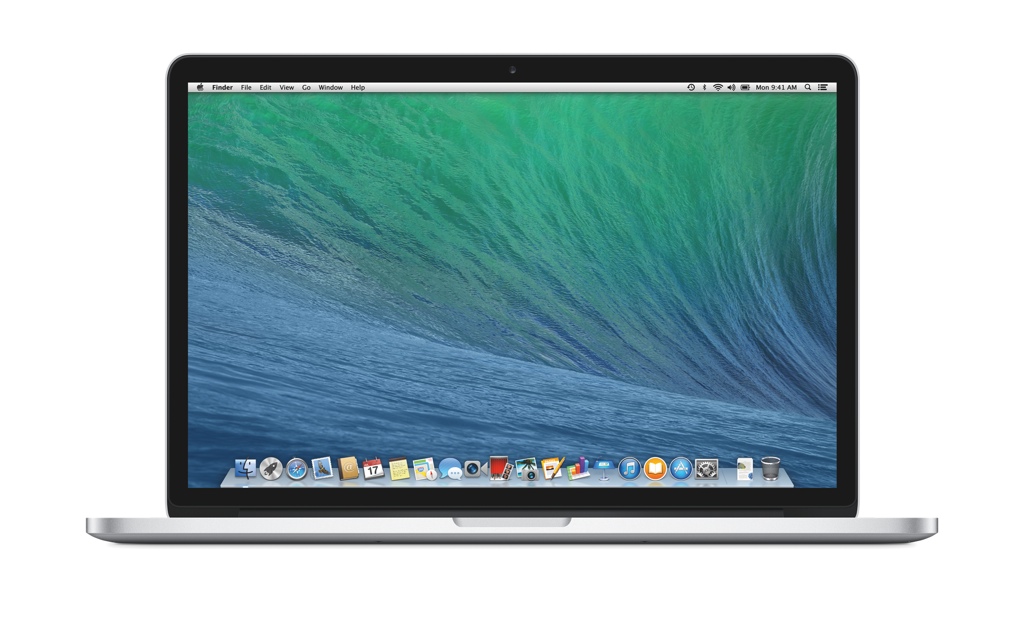
This is a guest post by Jennifer Birch.
Apple released a while back the newest version of OS X, called OS X Mavericks. The new OS is not a revolution. It is not the convergence of OS X and iOS. Instead, it is the evolution of a solid OS base that is over 12 years old. Sure, it borrows a few tricks from its mobile cousin, but it still feels like a desktop OS. Unlike Lion and Mountain Lion, this release is more polished and fixes some rough edges found in the last two releases. But it is not free of flaws either. With its updated features, can this free update steer the decade-old operating system in the future? Let’s find out.
Simple Design
At first glance, it seems that nothing has changed with the new update; however, after exploring it, one thing was altered: skeuomorphism is gone. Looking at the picture of the iPhone 5S’s interface, as featured on O2, it borrowed the iOS 7’s simpler design concept. The design changes done on its interface include:
- A clean and “flatter” login interface
- Gradients and textures were removed
- Smoother color gradients were applied to most of the icons
Some designs that were left untouched, though:
- Reminders textured cover
- Messages’ “glossy” text bubbles
- Game Center’s textured green linen and wooden look
Finder Tabs
Now, it is easier to manage all your files in the Finder Tabs. It lets users organize all their windows into one group. Its new window also lets people segregate folders into individual tabs for easy viewing. In a nutshell, here are some of its Finder-centric features:
- It works on full-screen mode
- Tags are color-coded
- Drag a tab to create a new window
- Features a “Merge All Windows” option
- Tag files from the Finder and sort them by tag for easier access
iCloud Keychain
Users can now manage their passwords better with the iCloud Keychain. Similar to third-party password management apps like 1Password, passwords and even credit card numbers can be automatically saved. Here are some of its best features:
- It uses 256-bit AES encryption
- It works across multiple iOS and Mac devices
- Mobile numbers can be used to verify a user’s identity in Keychain
However, it still has several limitations:
- It only works on Safari
- It does not support third-party browsers
- It will not automatically fill passwords for most apps
- Cannot sync encrypted notes between mobile devices and desktops
iBooks and Maps
Maps and iBooks are two of the original features included on Mavericks. It is the first time that Apple included these apps on their desktop OS. iBooks can now let users sync the e-books they are reading to all their iDevices, while Maps allows them to chart their travels and push these direction to their iPhones. Other notable features of these apps are:
Maps
- Turn-by-turn directions will appear as notifications on the iPhone
- Allows for bookmarking of locations that can be searched on the Mac
- Integrated to the Calendar; this brings directions to a user’s scheduled appointments
iBooks
- Full access to the iBookstore
- Texts are bolder and sharper on the Mac
- Books purchased from the iBookstore will automatically sync with any iDevice
Power-Saving Capabilities
Various energy-efficiency technologies were considered when they designed Mavericks. The main focus was to reduce a device’s power consumption and save energy. These new features can help computers reduce its energy consumption by only letting essential tasks run on it. Below is a run-down of these technologies:
- App Nap – turns off apps that are not used frequently.
- Safari Power Saver – websites with display animations will not run until you click to play it.
- Time Coalescing – groups low-level timers together to allow a CPU to enter a low-power state more frequently.
Conclusion
In spite of the OS X Mavericks’ “birth pains,” it is still a remarkable software which needs to be explored thoroughly. It may have borrowed some elements from the iOS, but it is still a desktop-centered OS. As Steve Jobs has once said “we still need our trucks”, and Mavericks powers our trucks well. This update will surely bring a positive experience and appeal to all its users.
* Image copyright by Apple Inc., 2013. Used with permission.
About the author
Jennifer Birch has officially fallen in love with the OS X and is determined to find and unlock its secrets. She usually scours the Internet for the latest technology updates. Aside from writing about tech, Jennifer also loves to jog on her spare time. Follow her on Twitter: @WrittenByJenni.